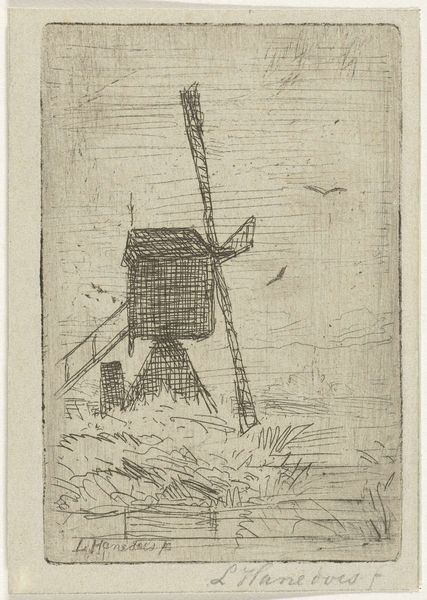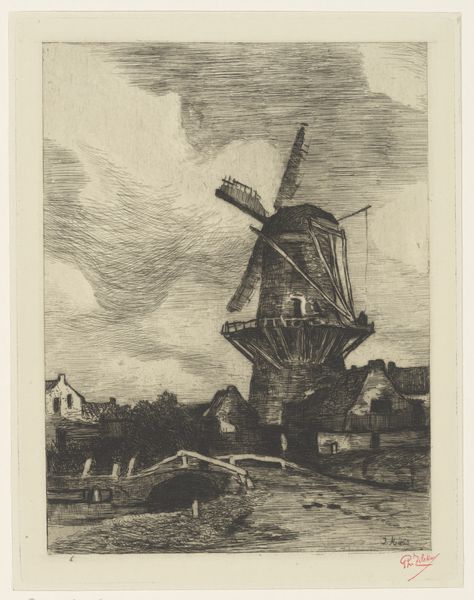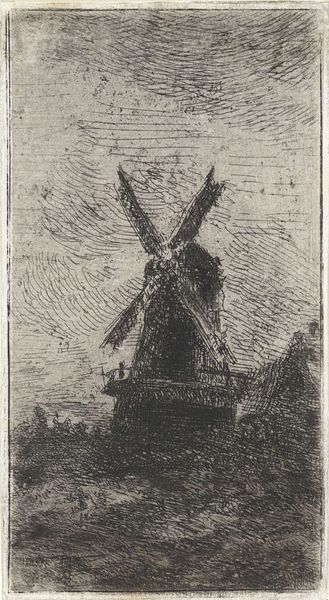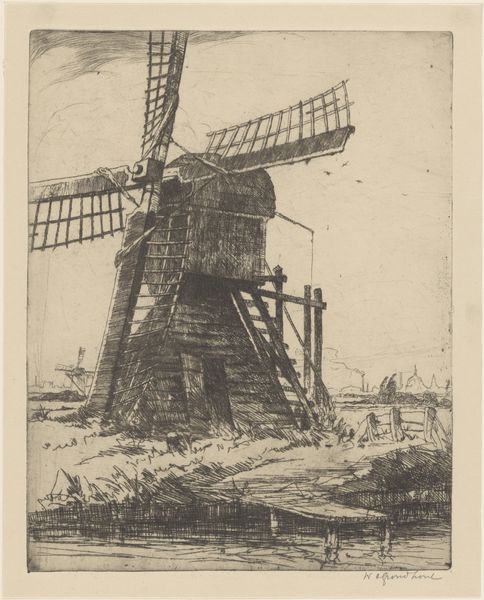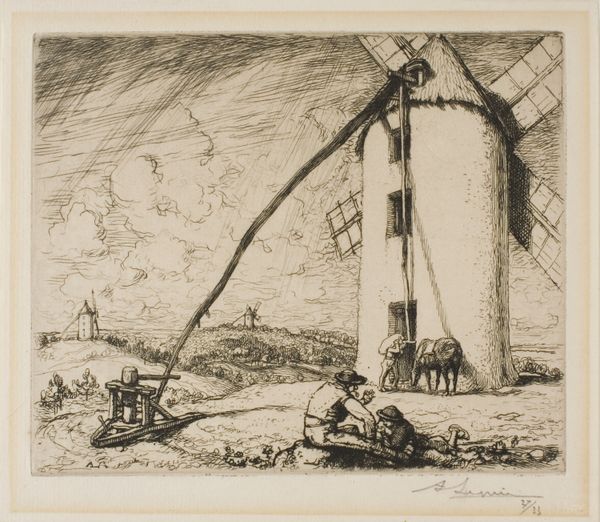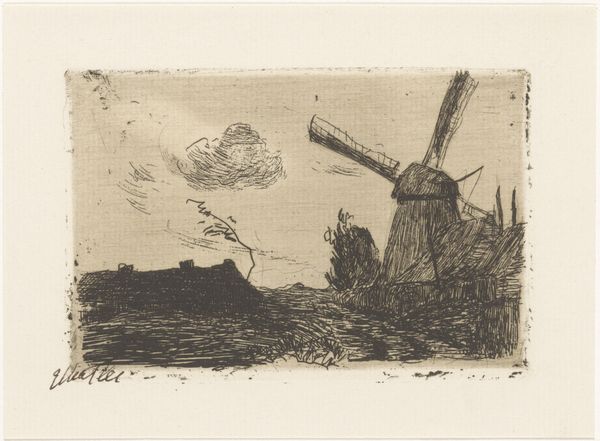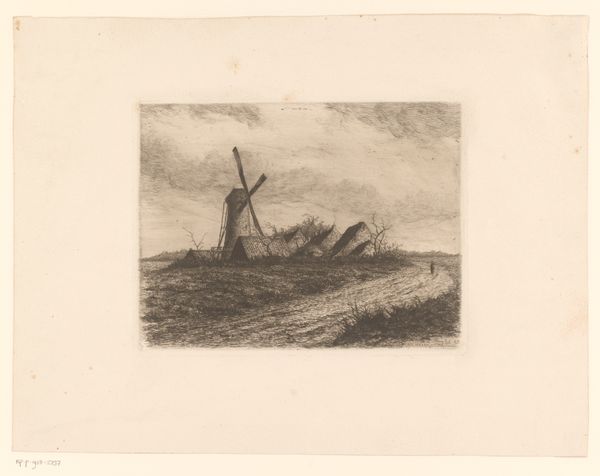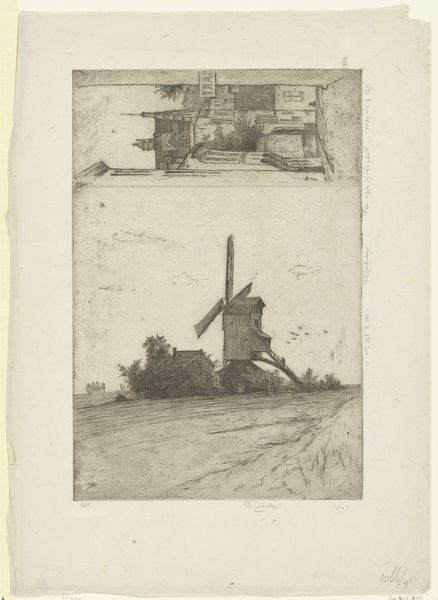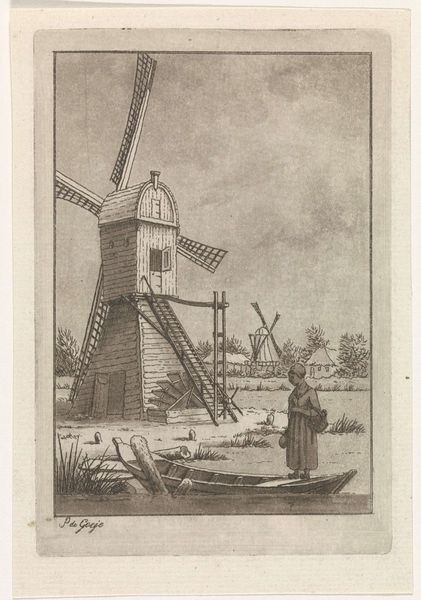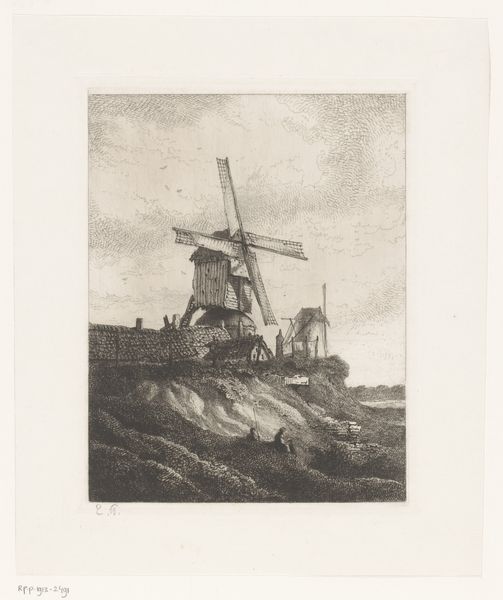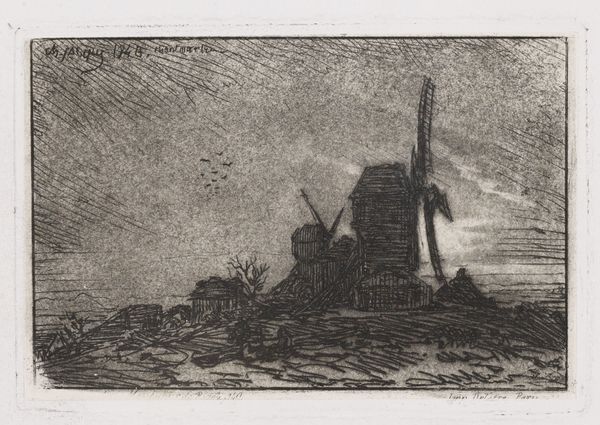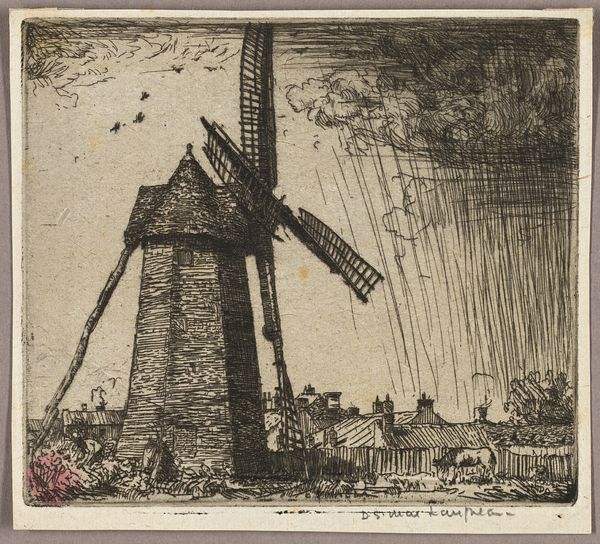
drawing, ink, pen
#
drawing
#
ink drawing
#
dutch-golden-age
#
pen illustration
#
pen sketch
#
landscape
#
ink
#
pen work
#
pen
#
realism
Dimensions: height 124 mm, width 91 mm
Copyright: Rijks Museum: Open Domain
Curator: My first thought: it’s so raw and elemental, isn’t it? Just a windmill practically erupting from the landscape. The texture alone suggests wind and grain and earth… all the building blocks of a kind of humble power. Editor: Absolutely. Here we have "Molen", which translates to "Mill", a drawing executed in pen and ink sometime between 1847 and 1899 by Jacob Maris. Currently it is held in the collection of the Rijksmuseum. It really is compelling, even within its humble scale. Curator: It is modest, yes, but it’s making me think of the symbolic weight windmills carry—industry versus nature, innovation alongside tradition… it's like a visual fulcrum between eras. This windmill stands tall, connecting with those dark expressive strokes across the skyline suggesting so many narrative possibilities. Editor: You've said the keyword already—"tradition"—windmills were ubiquitous features within the Dutch landscape. They speak directly to Dutch ingenuity but even further still, their fight against the elemental. Their battle against both wind and water. It's a strong image, a silent warrior in ink. Curator: Right, and don’t forget the birds overhead. A few quick, simple strokes indicating movement and migration – implying a dialogue between what’s fixed, this old solid structure, and what’s transient, constantly moving through space. It provides a great sense of dynamic potential energy just waiting to be unleashed by a breath of wind. Editor: I'm intrigued by the lower part of the illustration; all those layered hatchmarks. A chaotic jumble, aren't they? One almost imagines that Maris has drawn everything upside down, as if that wild area around the base should be at the very top. In any case, they work perfectly. It keeps me from romanticizing that mill. The romanticization is always present; it seems inescapable, doesn't it? Curator: Perhaps inescapable, but also essential. We see windmills represented throughout painting history; often standing for bucolic fantasy, but it’s more interesting, I think, to read this image in terms of a powerful anchor, in conversation with deeper national narratives. Editor: A welcome anchor. Looking at it I know I am grateful for the experience and feel well-fortified before returning back to the gallery. Curator: And for me it reinforces how art has this enduring capability to distill entire cultures into something as simple as an ink sketch on paper.
Comments
No comments
Be the first to comment and join the conversation on the ultimate creative platform.
